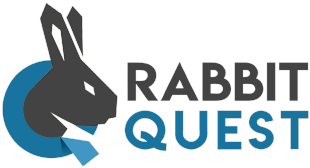How do you make mental well-being a topic of discussion during your check-in moment?
Do you find that during a check-in moment, it is sometimes difficult to go into depth? As an HR manager, you want to use a 1-on-1 conversation to get the best possible insight into colleagues' mental well-being. It is important that everyone dares to be vulnerable, but this can be a challenge for some employees. With these 5 tips, learned from collaborations with 500+ organisations, you can discuss mental well-being in 1-on-1 moments and get closer to your colleagues.
Time to read: 5 minutes
Transform your 1 on 1 moment 💯
Do you also use monthly check-in moments to better understand how colleagues are doing physically and mentally? A one-on-one moment is one of the most commonly used forms within organisations to start a conversation about mental well-being. These brief moments offer employees the opportunity to feel heard and indicate how they are doing. However, despite their popularity, check-in moments can sometimes not quite work the way you might want them to. This sometimes happens when the focus shifts towards finalising agenda items or discussing weekend plans. Perhaps in these cases, some employees can see check-in moments as routine rather than a valuable opportunity to connect and discuss what is on that employee's mind. An example of a less in-depth 1-on-1 moment is a time with low-key conversations about the weather or weekend plans without leaving room for exchanging deeper work-related challenges or personal concerns. It is important to start 1-on-1 conversations in a positive and upbeat manner so that employees feel the space to open up, but there should also be some time left to go into depth. With these tips, your check-in moment can become when colleagues dare to be open and vulnerable about their mental well-being. Tip 1: Making yourself vulnerable during check-ins 🤲
Think back to a moment when you opened up about a sensitive topic to someone you didn't know very well. You were probably sitting or standing opposite someone who may have been the first to share their story. Perhaps it was a similar experience, or this person told you about a recognisable feeling in an unpleasant work situation. You felt the space to share an experience or feeling yourself that was bothering you at that moment.
By first making yourself vulnerable during a 1-on-1 moment, you encourage others to do the same. This creates an atmosphere of trust and understanding, where employees feel free to share their feelings.
For example, you can start the check-in moment with your experience or a challenge from the past day or week. You can start the check-in moment with the sentence: "I would like to share my own challenges with stress...". You discuss how stress affected you both physically and mentally. For example, you had trouble sleeping or felt constantly overwhelmed. You may have found it difficult to respond quickly to crisis situations and felt less stability in handling feedback points. This openness is going to create an environment where the employee feels free to be themselves and be vulnerable.
Tip 2: Give them space 💭
You are preparing for a check-in moment with an employee and want to make sure he or she feels comfortable enough to open up. It could be that colleagues become unsure about expressing their feelings because of other people's opinions. It is important to make the employee aware of this prior to the 1-on-1 moment and indicate that these opinions do not play a role here. For example, you can make it clear at the beginning that the information will not be shared with colleagues and that your employees need not worry about your opinions. For example, call it a 'no opinions zone'. Employees can thus be encouraged to let go of their fear of others' opinions and focus on the emotions they are currently experiencing.
The familiar phrase: "This is a safe space where you can speak freely and openly...", you've probably heard it somewhere before. Because employees may have heard this many times at different times and places, it may feel like a generic promise to some employees. This might mean that not every employee actually feels that space and openness to be vulnerable. Discussing this part can be done in a light-hearted and upbeat way as an HR manager by, for example, starting the session with a funny oath or a small charter: "I am sending my opinion on holiday, and I am fully there for you to listen without judging" or "My opinion I am now putting in a box, sealed with duct tape, and that will lie in the basement until this 1 On 1 moment is over". This can relax the atmosphere of this moment and make it easier for employees to be vulnerable during check-in sessions.
Tip 3: Create a relaxed home feeling 🛋️
You probably know better than anyone the importance of creating a comfortable and convivial atmosphere for your colleagues during a sensitive conversation. You can also incorporate this into your check-in moment. Often, these take place in formal meeting rooms, small spaces, virtually or at the employee's workplace. By adapting the environment of the 1-on-1 moments, you can create a convivial and comfortable atmosphere where employees feel safe to open up. It reduces formal barriers and promotes an atmosphere of trust and openness.
One idea is to create a homely environment, similar to the relaxed atmosphere of home. This could mean, for example, setting up a relaxed seating area in the office with soft lighting and enough chairs so no one has to stand. Ask everyone to bring their favorite mug from home with a hot drink in it, which can bring a sense of comfort and the familiarity of home to the work environment for a bit. Home workers can settle on the sofa during a virtual session, where they feel most comfortable.
Tip 4: Break the "going well" response 🙂
How many times have you heard this: "Yes, things are going well"? You probably can't deny that at one time or another, you yourself have given "I'm fine" as a quick response to the question: How are you doing? It is very easy for colleagues to hide behind the answer, "I'm doing well," but what if this habitual response masks a co-worker's real feelings? It is important to recognise and break through this reaction by asking more questions.
With different questions, you can find out whether this response is a true assessment of an employee's feelings. By asking, "So why are things going well?" or "What specifically is going so well that makes you feel this way?", you encourage employees to express their feelings and go deeper into their response. For example, when an employee says, "Everything is going fine", you can ask, "What makes things go fine, and what would you have liked to see or do to feel even better?" This may reveal hidden concerns or problems that would otherwise go unnoticed.
By observing how often a particular colleague gives this kind of "going well" response, you can get an idea about which colleagues might need more support. In a longer or extra 1-on-1 moment, this colleague might feel more space and freedom to open up and talk about emotions or concerns.
Suppose that during check-in moments, a colleague regularly answers with "I'm fine" or "Nothing special", you as HR manager can decide to continue the conversation at another time. For example, you can indicate that you have noticed that during this check-in moment, the person in question often replies with a short "going well" response. Tell the employee that you are always available if he or she feels the need to go deeper into feelings or share concerns.
Tip 5: Schedule extra time for this moment 🕰️
Brief check-in moments can sometimes be filled with brief conversations about the weather, an event from the night before, or weekend plans. This sometimes leaves little room for deeper exchanges about mental challenges that are both personal and work-related. Taking more time for the 1-to-1 moment can create space for employees to show vulnerability and go into more depth after catching up, something that is important for creating a convivial atmosphere.
One solution is to block more time, for example, 20 minutes extra, at the beginning of an extended check-in moment. During this extra time, employees are given the opportunity to air all the cozy and fun topics before entering the actual check-in moment. This can be done, for example, with a "chatting quarter", where you can share light-hearted and approachable stories together. Then you can start the actual check-in moment together with a fresh focus.
A check-in moment is one of the most commonly used ways by HR staff to gain more insight into employees' mental well-being. By turning this moment into a safe, atmospheric environment where each employee can openly talk about their current emotional status without judgment, a check-in moment can become much more valuable. With these moments, a colleague's mental well-being and team spirit can get a big boost.
Do you want to discuss mental well-being together? Schedule an appointment with one of us, and then let's have a digital cup of coffee soon.




